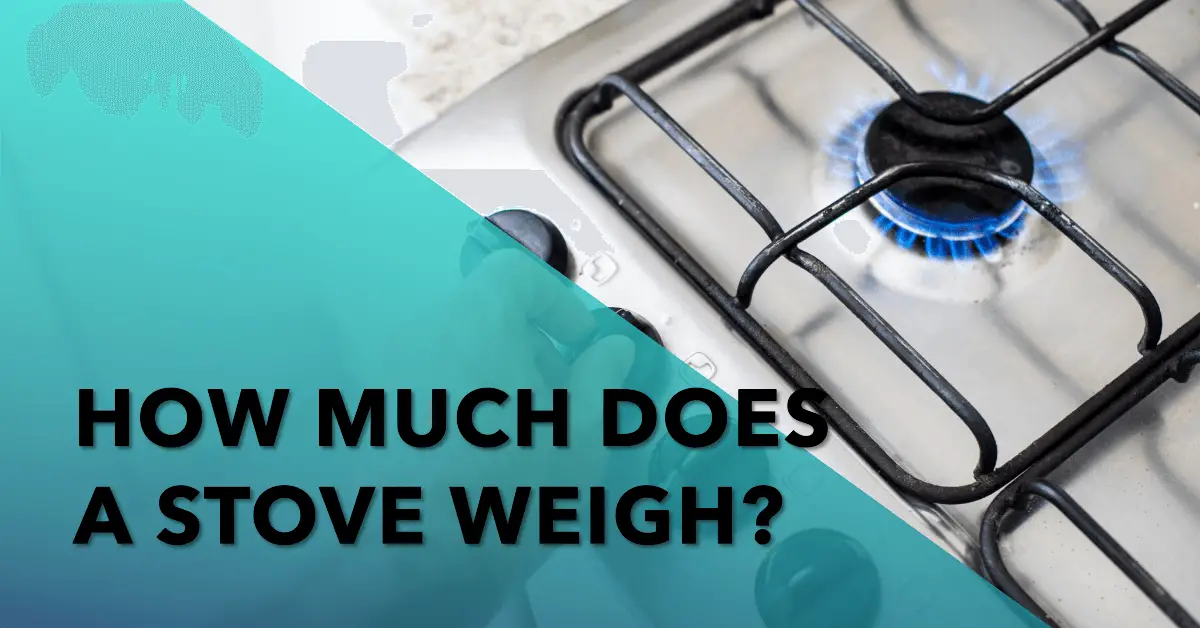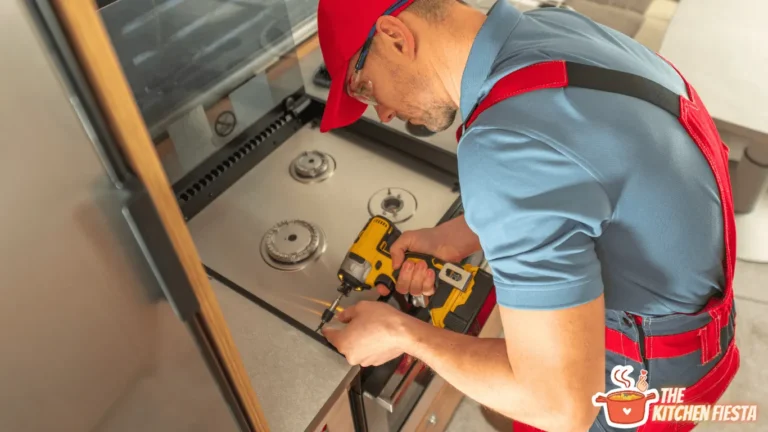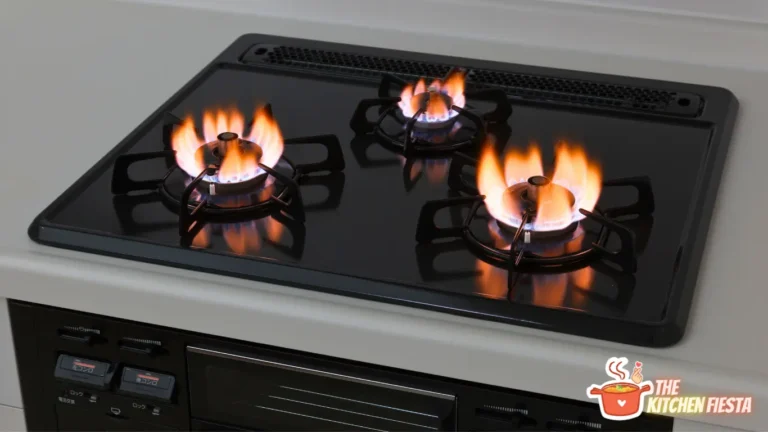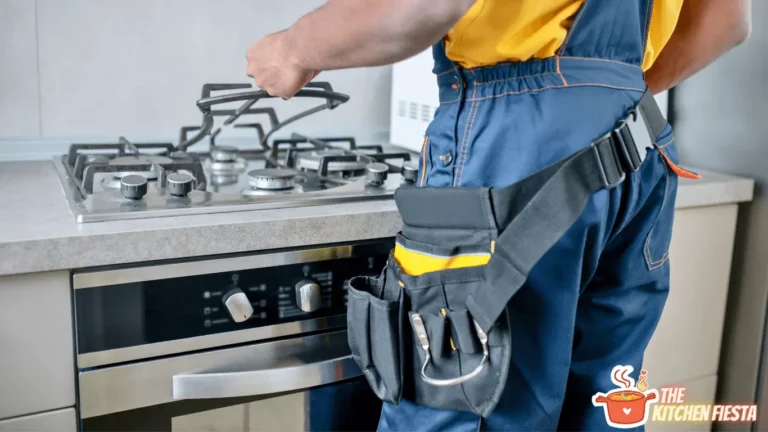How Much Does a Stove Weigh? The Complete Guide

If you’re in the market for a new stove, one of the most important factors to consider is the weight. But stoves can vary widely in how much they weigh depending on the type, size, features, and materials. So how much does the average stove weigh?
The short answer is that most standard stoves weigh between 150-350 pounds. Gas stoves on the lower end around 150 pounds and larger commercial ranges over 300 pounds. But weight can vary widely based on the specifics.
In this comprehensive guide, we’ll overview how much the most common stove types typically weigh. We’ll also look at how size, features, and other factors impact the weight.
Average Stove Weight by Type
The type of stove and fuel source is one of the biggest factors determining the weight. Let’s take a look at the typical weight range for some of the most popular stove types.
Gas Stove Weights
Gas stoves are one of the most common types found in homes today. They utilize natural gas or propane for fuel. Here’s an overview of average gas stove weights:
- Compact Gas Stoves: 70-100 lbs
- Mid-Size Gas Stoves: 100-150 lbs
- Professional Gas Ranges: 150-300 lbs
Gas stoves use flame burners fueled by gas which does not add a ton of weight. More compact 24-30 inch gas stoves for apartments average between 70-100 pounds.
Larger mid-size gas stoves with 4-6 burners and a single oven average 100-150 pounds. Commercial gas ranges found in restaurants can be quite large and weigh anywhere from 150 to 300 pounds.
The heavier steel or cast iron grates and thicker oven insulation increase the weight on professional models. High end gas ranges also sometimes have dual fuel options allowing a gas cooktop and electric oven which adds weight.
Electric Stove Weights
Electric stoves rely on heating coils or smooth glass tops to heat cookware through induction or radiant heat. Here are the typical electric stove weights:
- Compact Electric Stoves: 100-150 lbs
- 30-Inch Electric Ranges: 150-220 lbs
- 36-Inch Electric Ranges: 220-350 lbs
Electric coils and smooth tops include more components which make them a bit heavier than gas stoves on average. Thinner lightweight models can start around 100 pounds for apartment sized units.
Most standard electric ranges with a 30-inch cooktop and single oven fall between 150-220 pounds. Larger 36-inch electric ranges average 220-350 pounds. Built-in double oven electric units also fall on the heavier end over 300 pounds.
Smooth top induction or radiant electric ranges tend to be a bit lighter than traditional electric coil ranges which have heavy metal discs under each burner.
Induction Stove Weights
Induction stoves have gained popularity over recent years and use electromagnetic coils to directly heat pans and pots. Here are the typical induction stove weights:
- Portable Countertop Models: 75-90 lbs
- Built-In Induction Ranges: 150-180 lbs
Smaller portable induction cooktops designed for countertops start around 75 pounds. Larger 36-inch built-in induction ovens and ranges fall between 150-180 pounds.
Induction stoves tend to be a bit lighter than electric or gas due to the lack of heavy heating elements. However, the internal electronics required for induction heating can add some weight.
Freestanding Stove Weights
Freestanding stoves include an outer enclosure for a finished look from all sides. Here are typical freestanding stove weights:
- Compact Freestanding Stoves: 300-350 lbs
- Larger Capacity Models: 350-400 lbs
- Commercial Models: Up to 700 lbs
The outer metal housing, insulation, and protective finish make freestanding stoves much heavier than other range types. Even compact apartment size freestanding stoves weigh 300-350 pounds.
Larger capacity freestanding stoves for bigger kitchens often weigh between 350-400 pounds. Commercial high-output models found in restaurants can weigh up to a whopping 700 pounds!
The thick insulation for fire prevention and durability of the outer shell account for the hefty weight of freestanding stoves.
Stove Weight by Size and Capacity
Beyond the stove type, the overall size, burner count, and oven capacity significantly impact the weight as well. Let’s look at average stove weights by size:
Compact & Apartment Size Stoves
Compact stoves designed for apartments and small kitchens range from 70-120 pounds typically. This includes:
- 24-inch stoves with 2 burners
- 27-inch stoves with 3 burners
- 30-inch stoves with 4 burners
The smallest 24-inch gas stoves weigh as little as 70 pounds. 30-inch electric or gas units with a single oven can reach up to 120 pounds.
Mid-Size 30-Inch Stoves
The standard 30-inch stove size found in most homes ranges from 130-220 pounds depending on configuration:
- 30-inch gas stove with 4 burners: 130-170 lbs
- 30-inch electric coil range: 170-220 lbs
- 30-inch smooth top electric range: 150-200 lbs
Having a 5th burner, continuous grates, or a double oven can also push the weight of a 30-inch stove over 200 pounds.
Large 36-Inch Stoves
For larger kitchens, 36-inch stoves can accommodate more burners and double oven configurations. Weights for full-size 36-inch ranges run between 200-350 pounds typically.
- 36-inch gas stove: 200-275 lbs
- 36-inch electric range: 275-350 lbs
The biggest 36-inch pro-style gas and electric ranges with double ovens and extra features can weigh over 300 pounds.
Professional Restaurant Ranges
Commercial grade restaurant ranges are built for high performance and durability. They are also absolutely massive in size which leads to very high weights:
- Full Sized Restaurant Range: 350-700 lbs
It’s not uncommon for a gigantic restaurant range to weigh over 500 or even 700 pounds! The heavy duty stainless steel construction, oversized grates, multiple powerful ovens and other features contribute to the incredibly high weight.
What Features Increase a Stove’s Weight?
With so many options, configurations, and feature packages available on modern stoves, certain choices can bump up the weight considerably. Here are some of the features that will make a stove heavier:
- Cast Iron Grates: Cast iron grates are more durable but much heavier than lighter steel grates. They can add 10-20 pounds.
- Continuous Grates: A heavy single grate allowing you to move pots across the entire cooktop rather than individual grates per burner. Adds 15-30 lbs.
- Double Oven: Having two oven cavities instead of one significantly increases the overall weight by around 50+ pounds.
- Larger Oven Capacity: Professional ranges may have oven capacities of 6 cubic feet or larger adding insulation and weight.
- Convection Ovens: The fan and heating elements add around 10-15 pounds over regular ovens.
- Stove Top Griddle: Integrated griddles especially cast iron can weigh 30-50 pounds.
- Stainless Steel Exterior: More durable and stylish than enameled finishes but heavier as well.
- Extra Burners/Elements: More cooking zones means more weight from added components.
- Self-Cleaning Ovens: This feature needs thick insulation driving up weight.
How Material Impacts Stove Weight?
The materials used for the major stove components also affect the overall heft. Here are some examples:
- Cast Iron Burner Grates: Much heavier than lighter steel grates but retain heat better. Can double the grate weight.
- Cast Iron Oven Linings: Cast iron oven interiors improve heat retention but add weight over sheet metal.
- Thick Steel Top Plates: Commercial range tops use very thick 1/2″ steel plate tops that are durable but heavy.
- Stainless Steel Exteriors: More stylish than porcelain enamel but stainless steel housings add 20-40 pounds typically.
- Ceramic Glass Cooktops: Smooth glass tops weigh less than coil burners. But extra insulation is required adding some pounds.
- Circuit Boards & Electronics: The complex electronics required for induction cooking adds weight over gas models.
Tips for Moving and Installing Heavy Stoves
Handling a several hundred pound stove poses safety challenges. Use these tips when moving or installing a heavy stove:
- Recruit 2-3 strong helpers to lift and maneuver the stove safely. Don’t attempt moving solo unless an extremely compact model under 100 pounds.
- Invest in an appliance dolly or hand truck with heavy duty straps to secure the stove for transport. Trying to lift a 300 lb stove without a dolly can lead to injury.
- Make sure the intended path from outside to the kitchen is clear of obstacles and doors are propped open wide. Measure doorways to ensure the stove can fit through.
- Protect flooring by placing boards, plywood, or old cardboard along the entire path to prevent damage when sliding the heavy stove.
- Have shims ready to level and stabilize the stove once in place in the kitchen. Taking time to properly level using shims prevents rocking.
- For extremely heavy commercial ranges, consider hiring professional appliance installers. They have the specialized equipment and experience to maneuver bulky 500+ pound stoves.
- Add sturdy anti-tip brackets secured to the wall as an important safety measure to prevent tipping with stoves exceeding 300 pounds.
While heavy, taking some sensible precautions and getting help allows even very heavy stoves to be moved and installed safely.
The Bottom Line on Stove Weights
At the end of the day most standard stoves for home kitchens fall between 150-350 pounds depending on their size and design. Compact models can be below 100 and mammoth restaurant ranges over 500 pounds!
The stove type, size, feature set, and construction materials all contribute to the total weight. Being realistic about ability to safely move a heavy stove or getting professional help is recommended.
Now that you know what to expect for stove weights, you can shop smarter and find the right balance of size, features, and weight for your needs. Just remember the range of your stove’s weight!






